AE Monthly usually doesn’t pay much attention to Amazon, the one-size-fits-all giant on-line retailer where you can buy books (and just about everything else) with one click simplicity and mind boggling speed. If you’re a member of their “prime” group all shipping charges are covered by one moderate fee. When it comes to popular, mass market bookselling, Amazon not only dominates, it rules.
If you happen to be an investor, you’d find that no less a financial authority than the NY Times (April 25, 2014) reported that “Amazon’s lofty valuation has long baffled many investors and analysts. But one thing they can agree on: Betting against Amazon has invariably turned out to be a mistake over the long term. (The stock has tripled over the past five years.)”
Yes indeed, Amazon seems to meet with widespread consumer satisfaction - that is if you can overlook reports of sweatshop working conditions, predatory pricing practices, or retribution against publishing firms and authors that don’t tow the company line. Amazon is doing just fine and its model of book selling that has everything to do with mathematical formulas and nothing to do with the books themselves does indeed keep the inventory moving.
This month we asked some of our bookseller friends and colleagues the question that has long lurked in the back of our late 20th century (read “olden days” pre-internet ) consciousness, that is, why would anyone list on Amazon?
The response was swift.
Peter Masi, a Massachussets dealer wrote: “I have 20,000 listings on Abe, Amazon, Alibris - Abe still performs best for me, but Amazon runs a close second lately.
“There is talk about Amazon being better for selling newer books and there is probably some merit to that,” he wrote, observing that “they are leaning towards newer material, but by no means limited to that – I sell antiquarian books there too – and Amazon shipping works wonderfully well…”
“Speaking from the bottom of the pile,” wrote Joyce Godsey, another Massachussets on line dealer, “I only list stuff on there that I am willing to let go at the lowest price. Basically, it’s easily gradable and has nothing special going on about it. If I have something better I list it elsewhere. And when I go shopping it’s the same way...If I end up buying something on Amazon (I start at Bookfinder) then I am buying something that I have no expectations of quality.
My Biggest Single Venue
“In answer to your question,” Lorrin Wong, an LA dealer replied, “Amazon is my biggest single sale venue. For many years I sold more on Amazon than ABE, Alibris, Biblio.com and Antiqbook combined. It still generates 40-50% of my total sales. My books are priced identically on Amazon as other venues.
Wong has been selling books online since 1995. “Initially, the vast majority of my sales were ordinary and everyday buyers. These were people who read mysteries or general fiction and probably didn't place a high priority on the condition of the book as long as it met or exceeded a minimal level. They weren't looking for a pristine copy. They simply wanted to read the book. Price was an important criterion.
“My books aren't priced at the penny or dollar level and the condition of my fiction is generally fine. However, my books, particularly fiction, are priced so they will appear on the first screen of search results. I don't think too many price conscientious fiction readers bother to look beyond one screen.
“The mix of books that I offer has changed over the years,” he continued. “In the early days, I sold 100% fiction. However, that has evolved to about 60% non-fiction and 40% fiction today. The prices of modern fiction have dropped so much in the past 20 years that I can't imagine how one could survive selling only fiction. I have not found the Amazon customer difficult to deal with. I doubt that I get more than one or two returns a year (and that estimate may be high). I think my Amazon rating is around 95% (I haven't checked in awhile) but you'd have to be pretty bad to get a rating below 90%.
“However, the customer mix is changing. Initially, I'd guess that 95+% of my Amazon customers were readers who were very price sensitive. There would be the occasional oddball collector tossed into this mix (but I think most serious collectors continue to buy on ABE).
“Over the years, new customers have appeared on Amazon,” he continued. “I now sell books to the libraries at Harvard, Princeton, Stanford, UCLA and many other colleges and universities and to professors at these institutions.
“This is almost exclusively non-fiction. I do not have an established relationship with these individuals or institutions. They are simply making the occasional purchase and I happen to have availability. In addition, I sell art books to some of the toniest art galleries in New York (I sell a lot of art books and catalogs). These customers are even more focused on availability than universities and price does not seem to be a key consideration.
“I think it's hard to talk about the Amazon marketplace as if it is one homogeneous mix. It is the 800 gorilla and it has changed the marketplace but the online used book marketplace is a lot different today than 20 years ago.
“It definitely has changed the low end fiction market. Just ask any customer who buys cheap fiction to read. They love Amazon. But upper end buyers are also using the venue.
“I have no idea why, but I think these buyers are not affected by the low end clutter that everyone complains about. They generally have specific needs that are hard to find. They know how to read and evaluate a condition description and must feel confident in placing an order through Amazon. It would seem that they could just as easily place the order on ABE or Alibris, but in general I find that they don't.
“I really don't understand why booksellers think that selling on Amazon will be a bad experience for them. I can understand why a bookseller may choose not to sell on Amazon at all, but the Amazon selling experience is pretty painless and is comparable to the other online venues.
“The genie is already out of the bottle. I don't think anyone on this planet doesn't know about Amazon and my belief is that more and more institutional buyers (colleges, universities, art galleries) are turning to Amazon.”
Peter Koffsky had a similar point of view: “To tell you the truth, I'm tired of uninformed Amazon-bashing,” he wrote. “Many buyers seem to know only Amazon. They go straight there for unusual items. I've sold well over 3,000 books there, and I've gotten thank-you's that indicate the buyers have been looking for certain items for years. Amazon does all the work except shipping; the items are on sale indefinitely so they are there when the buyer looks for them; the commission is reasonable; there is no up-front cost.”
Without Amazon, “we would wither and die,” said Betty Kilner of Ainsworth Books, a Canadian dealer in British Columbia. “I stopped listing on eBay years ago, such a crap shoot.
“My reasoning as far as Amazon is that as long as I keep up my listing standards, full descriptions and notes as well as images, I am giving the buyer the best chance of finding what he wants. Our average sale there is probably $25.00 or more. We recently took on a consignment of high end math & physics texts. Every one that has sold has been sold on Amazon.com.
“I know many feel like Amazon treats books as widgets and I have to agree but you also have to agree that for many, the first place they look to buy is Amazon.”
Arts specialist finds new business on Amazon
“I've been in the online book business since 1993,” wrote Judith Pynchon of Ruggles Books, an arts specialist in Wilmington, North Carolina and only started listing on Amazon last year. I resisted for a long time, arguing that Amazon buyers weren't ‘my people,’ because I have an inventory focused on mostly out-of-print gallery and museum catalogues in the arts. What finally convinced me to try, however, was data that showed people use Amazon as a search engine, some of whom are my people. I don't price my inventory differently on AZ from ABE or my own website.
“One of the interesting things is that only about a third of my inventory has made it on to Amazon; the rest has been rejected for not meeting the site's weird criteria for books. That’s fine with me, since the shipping allowance is pretty slim (especially for art books) and the fees pretty high. I do better with repeat customers and on ABE, but am sticking with AZ because I really do think I reach more people that way.”
Great for Buyers – Not So Great for Sellers - But not everyone is so sanguine
“I personally don't (use Amazon) because of the hassle along with having an open shop and other venues is too much for me,” Joanne Hoefer, a California dealer wrote, “(but) I do sell there for the local library - and as of now AZ is basically taking 55% + whatever the shipping is on new titles listed and it works out to around 40-45% depending on the title used. It’s great for buyers but not great for sellers. I have taken a ton of the library stuff down. If there is more than 15 of a title listed don't bother with it because most people just look at the first used page ….if you’re listed after that forget it.”
Prefers eBay
Despite the many who wrote that Amazon was not only a viable proposition, but a leading source of income, some like Jim Johnson thought differently. Johnson has been selling full-time for over 35 years...first in Pennsylvania and for the last 18 years in Birmingham Alabama. “Notwithstanding the flaws and annoyances of eBay, it is still the best way to sell for the money,” he wrote. “You have all the space in the world to describe the item, use numerous scans, etc. without having to jump through as many hoops as Amazon requires.
“Since I gravitate towards older and antiquarian stock, Amazon just doesn't work for me, and eBay does. It takes some time to learn …. but once you figure that out, and how to take advantage of their numerous free listing opportunities (in the past 6 months I have hardly had to pay for any listing fees other than my monthly $50 membership fee), it is by far the most efficient way to sell.”
Not a fan of Amazon Tactics but it does make me money
A thoughtful analysis came from Gene Alloway, owner of Motte & Bailey book shop in Ann Arbor, Michigan, which has a bricks and mortar book store and also an online presence.
“I do list on Amazon, and I sell a bit there,” he wrote (but) “ABE does better for me, as of course does my shop. I am not a fan of Amazon tactics, but it does make me money. I rarely list there first before it has been in my shops awhile,” and he noted “I do what I can to convert those buyers to direct buyers.
“What is wrong with the American consumer that they abandon local shops? Why do they shop at Amazon in such large numbers, even though they know Amazon is trying to overtake local businesses? Indeed, why did they embrace Walmart, which cost so many towns local businesses?
“I think the answer is in part prices, in part selection, in part ease of delivery. For many common goods, Amazon has great prices. For selection, Amazon has a wide range of stuff that no single shop can hold. For ease of delivery, it seems to even beat Sears.”
But then he comes back to the other part of the equation: “I want to buy books at my local bookshops. But the new ones carry only the most popular titles, which I think is absurd. They can never compete on pricing or selection on those with Amazon and thus choose to fight on ground their enemy chooses, yet they complain about it all the time. They don't carry esoteric titles, they don't carry university press. They don't support odd local or regional presses well on the whole. So, the only thing I get from them is the occasional sci-fi or fantasy hardcover. For history, science, and art well, they do not impress at all.
“I don't see them trying to develop these kinds of clientele either - I just see them complaining about Amazon and spending a ton of effort trying to fill every other evening with the latest fiction/mystery/kids author to hit the stands, all paid for by the publisher.”
Fight them where they ain’t
“So sellers,” according to Alloway, “have in many ways contributed to the run to online selling, and continue to do so by putting more effort there than into their own shops, or by refusing to develop audiences that are not just interested in best-selling fiction and popular non-fiction, thus leaving the buyers to find the more interesting books elsewhere.
“At this point, the way to beat Amazon is not to complain, but to fight them where they ain't. Do a better job in some area, have more interesting books (not every publisher sells books there), have a really attractive space, work on getting walk in traffic. Otherwise, complaining about AZ is like complaining that the Himalayas take up a lot of good farmland.”
------------------------
Links to booksellers mentioned in this article.
Peter L Masi, Monague,MA
peterlmasibooks.wordpress.com/
Joyce Godsey, Metheun MA.
Sic Press sicpress.com/
Lorrin Wong – LA – no link
Ainsworth Books, Delta, BC, Canada
www.ainsworthbooks.com/?page=shop/aboutus
Peter Koffsky – no link
Judith Pynchon, Ruggles Books, Wilmington,NC
Gene Alloway, Motte & Bailey, Ann Arbor, MI
www.mottebooks.com/shop/motte/index.html
Jim Johnson, Birmingham AL user name eBay Johnsonal
Shirley Bryant Authors and Artists, Muskogee, OK
www.aaabooks.com/index.php?p=11
Joanne Hoefer - Phoenix Books, Los Banos, CA


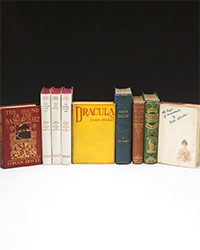
![<b>Heritage, Dec. 15:</b> John Donne. <i>Poems, By J. D. With Elegies on the Author's Death.</i> London: M[iles]. F[lesher]. for John Marriot, 1633. <b>Heritage, Dec. 15:</b> John Donne. <i>Poems, By J. D. With Elegies on the Author's Death.</i> London: M[iles]. F[lesher]. for John Marriot, 1633.](https://ae-files.s3.amazonaws.com/AdvertisementPhotos/8caddaea-4c1f-47a7-9455-62f53af36e3f.jpg)
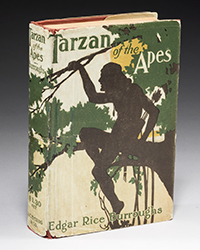
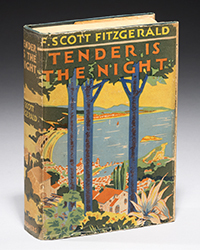

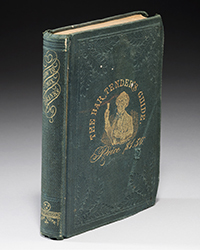




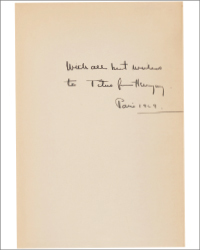
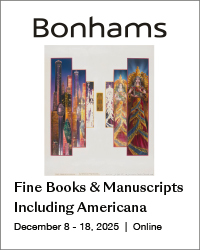



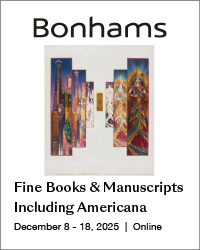
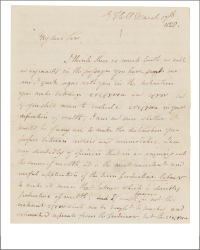
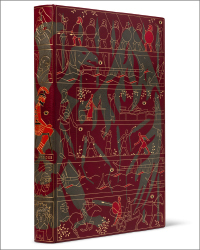
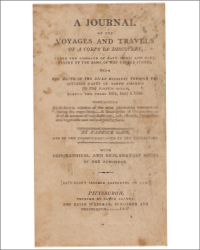
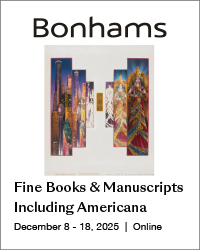
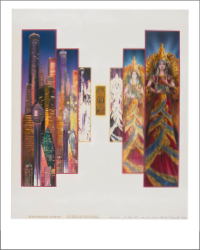
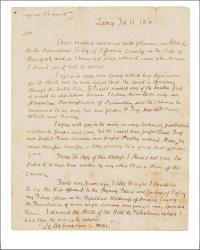

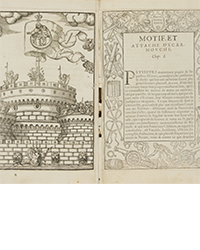
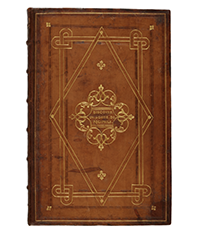
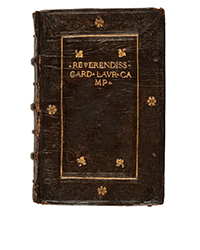
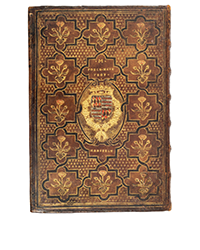
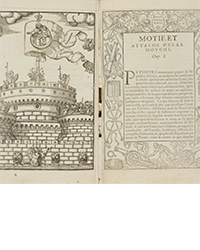
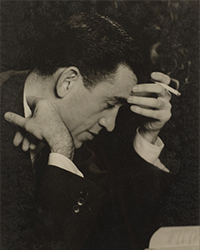
![<b>Sotheby’s, Dec. 16:</b> [Austen, Jane]. A handsome first edition of <i>Sense and Sensibility,</i> the author's first novel. $60,000 to $80,000. <b>Sotheby’s, Dec. 16:</b> [Austen, Jane]. A handsome first edition of <i>Sense and Sensibility,</i> the author's first novel. $60,000 to $80,000.](https://ae-files.s3.amazonaws.com/AdvertisementPhotos/9a74d9ff-42dd-46a1-8bb2-b636c4cec796.png)
